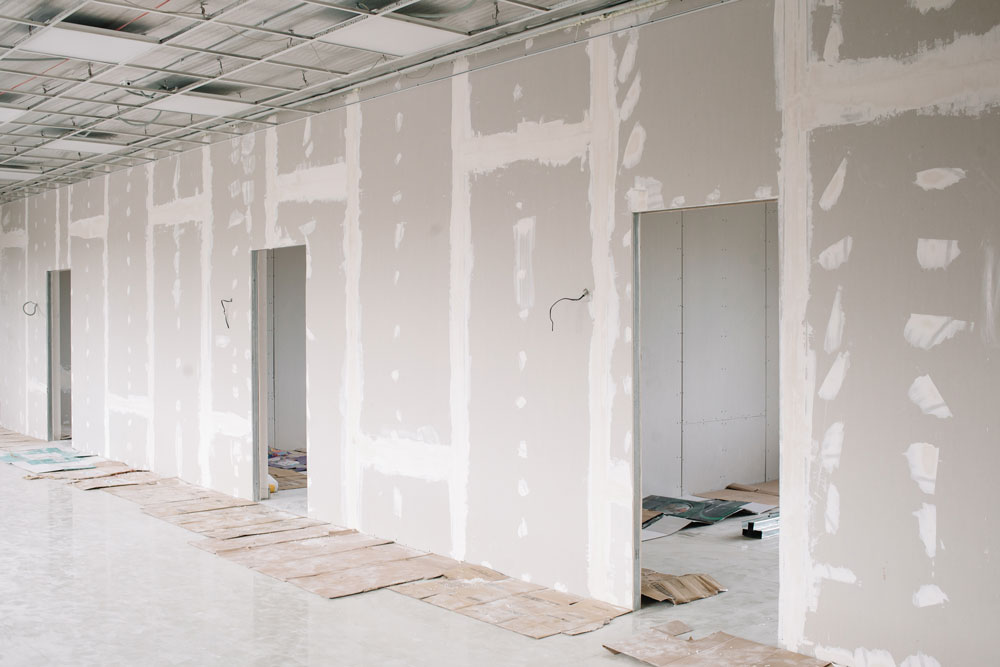How To Get Rid Of Mould On Plasterboard
 CONTENTS
CONTENTS
- What causes mould?
- The signs of mould growth on plasterboard
- How to remove mould from drywall
- Ways to prevent mould on plasterboard
- Contact us today
Mould growth on your plasterboard can cause extensive damage to it, as well as release foul odours into your home and put people's health and risk. A prompt, effective response by mould removal professionals is essential.
Our mould cleaners can deal with any mould growth in your home, no matter where it is, no matter the cause. Our nine-stage mould remediation process can eliminate all the mould in your home, including mould in the air.
Keep reading to find out more about what causes mould on drywall and remove it.
What causes mould?
Mould thrives in damp, dark, and humid conditions. It's a living organism that belongs to the fungi family which also includes mushrooms and yeast.
The main causes of mould growth are excess moisture and lack of ventilation. Whether it’s from leaking pipes, high humidity, condensation, or the aftermath of flooding, if water finds its way into your plasterboard walls and they cannot dry out quickly enough, mould will start to grow.
The harmful fungus can start growing in as little as 24 to 48 hours, so it can rapidly become a problem. You will often find it lurking behind furniture where air flow is restricted or in poorly ventilated, humid rooms such as bathrooms and kitchens. You can find out more about what causes mould in the home in this blog.
The signs of mould growth on plasterboard
The first indicator is discolouration. Plasterboard affected by mould usually has stains and spots on it that can range from black and green to brown and yellow, but it can be a much broader range of colours.
A musty, damp odour is another symptom of mould growth. The tell-tale smells are caused by mould releasing microbial volatile organic compounds (MVOCs) into the air.
There will also be a significant texture change on the plasterboard. Mould eats away at materials, causing them to degrade over time, so keep an eye out for any warping or softening of your walls.
How to remove mould from drywall
Applying bleach or other homemade mould removal solutions like vinegar and baking soda can seem like quick fixes, yet they fall short when dealing with mould.
While they may appear effective for superficial stains, they do little to get all of the mould that has grown deep into porous materials, such as drywall. Any left behind will simply regrow.
Attempting to clean it yourself can also be dangerous. You are highly likely to inhale, touch, and ingest mould spores while cleaning mould, and aggravating it could cause it to release spores which can then spread around your home.
If your plasterboard is soggy and riddled with mould, simply cleaning the surface will not cut it; replacement is often necessary.
Instead of trying to clean mould off drywall yourself, bring in professional cleaners, like ICE Cleaning's technicians. They can remove the affected drywall and dispose of it for you, as well as get rid of any mould on the framing or in the rest of the property. Our mould cleaners can even diagnose the specific cause of the mould in your home so you can deal with the root cause.
Ways to prevent mould on plasterboard
Mould thrives in humid environments, so keeping your home well-ventilated is key. Opening windows regularly lets fresh air circulate and reduces moisture levels.
Investing in a dehumidifier can also help. These devices draw excess humidity from the air, making it harder for mould to grow. For optimal results, maintain indoor humidity below 50%. You should bring in professionals to fix leaks as soon as you spot them, as well.
Cooking and showering release a lot of steam into the air. Use extractor fans during these activities or open a window.
Furniture placed directly against walls can trap damp air behind them. Pull furniture slightly away from walls to allow air to flow freely behind it and dislodge pockets of humid, stale air.
Drying clothes indoors significantly increases humidity in the home. If outdoor drying is not an option, consider drying clothes in well-ventilated areas or invest in tumble dryers vented outside your living space.
When redecorating, choose anti-mould paints designed with anti-microbial properties which resist mould formation. You should consider plasterboard treated against moisture absorption, too. This kind of product has been engineered not just to withstand exposure but to actively fight mould.
Contact us today
Our mould removal specialists are available nationwide, 24/7, 365 days a year. Every mould remediation comes with a lifetime guarantee*, too, so in the unlikely event the mould comes back, our technicians will return to site and remove it for free.
Get in touch with our team on 0208 066 0360 or enquiries@icecleaning.co.uk to book your mould removal service today.
*subject to advisories

Speak with me today,
I’m here to help
By asking you a few questions either via phone or email I can immediately provide a realistic estimation of the cost.
You’re in good company. We’ve cleaned for the following commercial clients… View all

Why choose us?
- Cater to a wide variety of cleaning situations
- Nationwide coverage, available 24/7
- Cater to commercial and domestic clients
- Free survey provided prior to quotation
- Emergency response team
- Offer a bespoke service designed to suit all your needs
- All technicians hold professional health and safety qualifications, including BICSc, IOSH, Dewpoint Professional & Safe Contractor
We’re fully accredited
We place best practise, professional expertise and health and safety at the core of our business. We’re fully compliant with all legal obligations. You can view a list of our accreditations below, or visit our Health & Safety page for more information.











-RGB-small.1707319151.jpg)




















